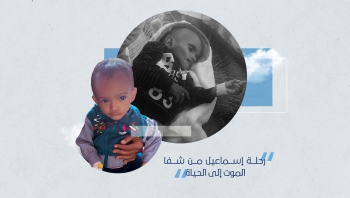Sign in
The market used to be a swamp of shallow water, a breeding ground for flies, insects, and disease vectors. During the rainy season, it was difficult for both shoppers and cars to enter.
This is how the head of the community committee in Bab Al-Mahr market in Al-Muftah district summarized the situation of the market before the paving process implemented by the National Foundation for Development and Humanitarian Response (NFDHR) with funding from the Yemen Humanitarian Fund (YHF) through the cash-for-work mechanism.
Bab Al-Mahr market was built on a slope without prior planning or drainage facilities. The shops are randomly distributed on both sides of the market, and there are many stalls and shacks inside the market, which is the main destination for the residents of Al-Muftah district in Hajjah governorate. The residents visit it daily to buy their food and daily needs.
Al-Muftah district is one of the remote districts that lacks most services. Its residents rely mainly on the cultivation and sale of qat.
Dr. Rajih Saad Al-Sharafi, a pharmacy owner inside the market, says: "Mosquitoes and flies were everywhere. The remains of slaughtered cattle and poultry were thrown in the market. You could see dogs everywhere. Bad smells were coming from everywhere. In short, Bab Al-Mahr market was a hotbed for diseases, including cholera."
There was a consensus between the local authorities and the community in Al-Muftah district that paving Bab Al-Mahr market with stones was an urgent priority. It would solve a problem that had long plagued the residents, caused diseases, and hindered movement in the market, especially during the rainy season.
When the NFDHR team went to Bab Al-Mahr market to prepare the technical studies and designs, they held several meetings with the authorities and community committees to study the needs of the market before the paving process, including the infrastructure of the sewage network. The community committee then took over the task of mobilizing support to implement a sewage network and remove the accumulated waste in the market for years.
The paving process covered 3,500 square meters of the market area, and 172 beneficiaries from the local community participated, in addition to dozens of skilled workers.
After the completion of the paving process, the situation of the market changed dramatically. The residents of Bab Al-Mahr and the shoppers noticed a positive improvement in the level of cleanliness. The areas of shallow water accumulation disappeared, and the swamps and remains of slaughtered cattle and poultry disappeared.
Success Stories
 |
Maternity Emergencies Save Lives in Al-Muteena, At-Tahita |
 |
Active Learning Methods Empower Students at Asmaa School |
 |
Food aid brings life back to displaced family |
 |
Ismail''''s Journey from the Brink of Death to Life |
 |
A cruel journey for displaced Youssef Haddadi and his family in search of safe shelter |
 |
Al-Bath Village - A Model for the Success of the Emergency Response Plan to Treat and Prevent... |
 |
Providing Medical Equipment and Supplies Helps Health Facilities Deliver High-Quality Services... |
 |
"Cash for Work": A Humanitarian Mechanism for Rehabilitating the "Beit Al-Shaqah" Road |
 |
From a hotbed of diseases to a shopping haven, the story of the transformation of Bab al-Mahr... |
 |
Residents of the Shoubak area suffer from water scarcity- high bills for basic needs |